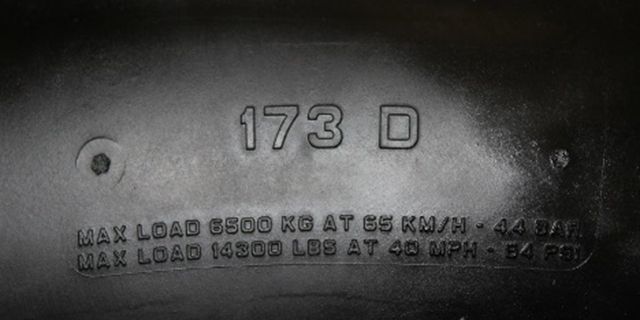Table of Contents
Load and speed index on tires represent vital information that must be matched to the machinery the tires will be used on. If the load/speed index is too low, the tires could be overloaded, according to James Crouch, national product manager, Agriculture and Forestry, for Yokohama Off-Highway Tires.
“Overloaded tires can lead to premature wear, accidents and spills, and even injury or death,” he said.
Load and Speed Ratings
Load and speed ratings must be calculated based on the real-world weight of each axle. That means looking beyond the machine’s shipping weight and accounting for the weight of fuel, spray solution, ballast, and load on the drawbar. If the machine has a bucket, add the weight of a full load of gravel or dirt.
“Be real about how you will be using the machine, and you’ll end up with an accurate load index,” Crouch added.
Lower speeds used in planting and fieldwork can be accomplished at a lower inflation pressure than higher-speed road travel. Be sure to check inflation tables to match the load, speed, and optimum inflation pressure for the speed at which you intend to use the tractor. If the pressure is too low, the sidewalls will flex too much and build up extra heat, which can result in excessive stress and could ultimately destroy your tire, Crouch said.
How to Determine Load Speed Index
David Graden, Michelin Agriculture global account manager, shared information about how to read a tire’s load speed index.
“On the sidewall you will find a number expressed like this: 173D,” he said. “The first three numbers are the load indices or the weight a tire can carry. A8, B, or D indicates the speed rating. Both must be assessed to choose the proper load speed index.”
James Tuschner
James Tuschner
Latest Tire Technology
Tire technology continues to advance, and Norberto Herbener, OE applications engineer for Trelleborg and Mitas Tires shared information about Increased Flexion (IF) and Very High Flexion (VF) tires.
“Both technologies represent reinforced tires that allow higher load capacities — 20% higher for IF and 40% higher for VF — at the same inflation pressure for the same tire size, compared to conventional tires.”
This means the same load applied to an IF tire allows for 20% less inflation pressure and 40% less inflation pressure for VF tires, when comparing the same tire size.
James Tuschner
All information is provided solely to provoke thought. All deductions made from information in this article must be confirmed by a certified ag tire dealer and tire manufacturer before use, with tire service work done only by certified ag tire dealer professionals.

